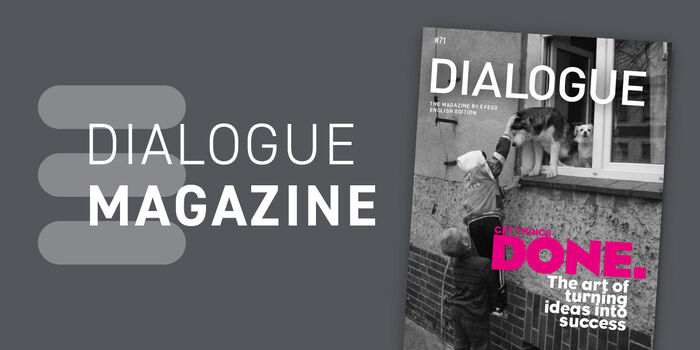DIALOGUE Issue 71 - GET THINGS DONE
Experte: Sebastian Diers, Managing Director, EFESO DACH | 03/24/2025 | Teilen auf in
The art of turning ideas into success
Entrepreneurial action is inherently creative and visionary, beginning with a strategic outlook. However, its true value is measured by execution. Great ideas can only make a difference once they are translated into practice.
The prosperity of Western industrialized nations has been built on the interplay of four key factors: intellectual freedom and the willingness to innovate; cultural and institutional frameworks that enable and foster innovation; the capability to effectively and efficiently translate new ideas into products and structures; and the political skill to establish them on a global scale. Over the past two centuries—marked by numerous disruptions since the dawn of the Industrial Revolution—these factors have remained a constant source of strength, and continue to be today.
However, cracks are beginning to show. While Europe remains a powerhouse of research and creativity, leading the world in patent applications per capita and innovation intensity, behind only Japan and South Korea, recent trends are cause for concern. OECD studies indicate a steady decline in Europe’s innovation intensity in recent years, widening the gap between Europe, Japan, and the United States.
At the same time, European companies face increasing complexity. Structurally, this is evident in diverse resource dependencies, fragile supply chains, high tax burdens, an increasingly autonomous regulatory landscape, deteriorating infrastructure, and unfavorable financing conditions. Socially and politically, Europe has spent the past two decades engaged in cultural conflicts and distributional debates rather than focusing on strengthening its competitiveness and defining its role as a globally competitive, self-sufficient player in an increasingly volatile and dynamic world.
Against this backdrop, the manufacturing industry is sailing into strong headwinds as it adapts to shifting market conditions and technological disruptions. The core challenge lies in managing multiple transformation processes simultaneously within a short timeframe—where, in the past, even a single transformation would have demanded an organization’s full attention for an extended period. Success requires not only developing groundbreaking ideas but also aligning them with the right goals, inspiring people to embrace change, and effectively and efficiently implementing shifts across business models, processes, structures, technology applications, leadership approaches, and new products. This is the true art of “getting things done.”
In this edition of DIALOGUE, we explore many facets of this art and examine the key success factors that help companies strengthen their innovation capabilities, operational effectiveness, and execution power.
|
|
Thank you for Signing Up |



